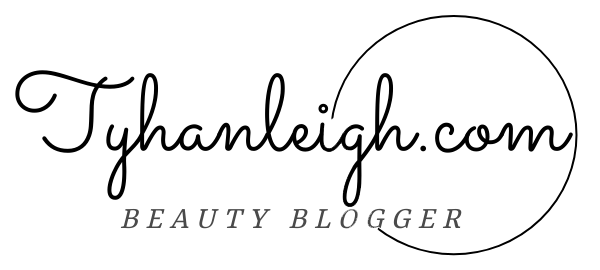Personal Fashion Business – Overcoming Common Fashion Business Challenges. The fashion industry is both exhilarating and demanding, presenting numerous challenges to entrepreneurs. From keeping up with ever-changing trends to managing supply chains and staying relevant in a competitive market, fashion businesses must be agile and strategic. In this article, we explore common challenges faced by fashion businesses and offer practical solutions to overcome them.
Keeping Up with Fashion Trends
Monitoring Market Trends
The fashion industry moves at a breakneck pace, with trends changing seasonally or even more frequently. To stay ahead, continuously monitor fashion magazines, runway shows, and social media influencers. Subscribe to trend forecasting services and attend industry events to keep your finger on the pulse of upcoming styles.
Adapting to Trends Quickly
Being agile is key. Develop a flexible design and production process that allows you to quickly adapt to new trends. Consider implementing a “fast fashion” model for a portion of your product line to respond rapidly to market demands.
Managing Inventory and Supply Chain
Efficient Inventory Management
Balancing inventory levels to meet demand without overstocking is a common challenge. Use inventory management software to track stock levels in real-time, forecast demand accurately, and automate reordering processes. Regular audits can help identify slow-moving items and reduce excess inventory.
Building a Reliable Supply Chain
A reliable supply chain is crucial for timely production and delivery. Cultivate strong relationships with your suppliers, ensure they can meet your quality standards, and have contingency plans for potential disruptions. Diversify your supplier base to mitigate risks associated with relying on a single source.
Other articles:
Standing Out in a Competitive Market
Developing a Unique Brand Identity
In a saturated market, a strong and unique brand identity is essential. Define what sets your brand apart—whether it’s your design aesthetics, quality, sustainability efforts, or customer service. Communicate this USP consistently across all marketing channels to build brand recognition.
Effective Marketing Strategies
Utilize a mix of marketing strategies to increase visibility. Leverage social media, influencer collaborations, email marketing, and content marketing to reach and engage your target audience. Run targeted ad campaigns and use analytics to measure effectiveness and refine your approach.
Ensuring Sustainability and Ethical Practices
Sustainable Sourcing and Production
Consumers are increasingly valuing sustainability. Incorporate sustainable practices into your business model by sourcing eco-friendly materials, reducing waste, and minimizing your carbon footprint. Highlight these efforts in your marketing to attract eco-conscious consumers.
Ethical Labor Practices
Ensure that your production practices are ethical and that workers are treated fairly and work in safe conditions. Transparency in your supply chain builds trust and loyalty among customers who value ethical brands.
Managing Financial Stability
Effective Budgeting and Forecasting
Maintaining financial stability requires careful budgeting and forecasting. Track your expenses meticulously and create realistic revenue projections. Use financial software to monitor cash flow and make informed decisions about investments and expenditures.
Securing Funding
If additional funding is needed, explore various options such as loans, investors, or crowdfunding. Present a strong business plan to potential investors, highlighting your market potential, growth strategy, and financial projections.
Navigating Digital Transformation
Building an E-commerce Presence
A strong online presence is crucial in today’s digital age. Develop a user-friendly, mobile-optimized e-commerce website that offers a seamless shopping experience. Invest in SEO to increase organic traffic and use paid ads to drive targeted traffic to your site.
Leveraging Technology
Adopt technologies such as AI and big data analytics to gain insights into customer behavior, personalize marketing efforts, and optimize inventory management. Use AR/VR to enhance the online shopping experience, allowing customers to virtually try on products.
Maintaining Quality and Consistency
Quality Control Measures
Implement strict quality control measures at every stage of production to ensure your products meet high standards. Regularly inspect materials, monitor production processes, and perform final checks before products reach customers.
Customer Feedback
Actively seek and analyze customer feedback to identify areas for improvement. Use surveys, reviews, and direct customer interactions to gather insights and make necessary adjustments to maintain quality and satisfaction.
Enhancing Customer Experience
Personalized Shopping Experience
Use data analytics to personalize the shopping experience. Offer tailored recommendations, personalized marketing messages, and exclusive offers to enhance customer satisfaction and loyalty.
Exceptional Customer Service
Provide excellent customer service by training your team to handle inquiries, returns, and complaints efficiently. A positive customer experience can lead to repeat business and positive word-of-mouth referrals.
Other articles:
Expanding Market Reach
Exploring New Markets
Identify and explore new market opportunities, both domestically and internationally. Conduct market research to understand the preferences and behaviors of new customer segments and tailor your marketing strategies accordingly.
Strategic Partnerships
Form strategic partnerships with other brands, retailers, and influencers to expand your reach. Collaborations can introduce your brand to new audiences and provide mutual benefits.
Staying Adaptable and Innovative
Continuous Improvement
Encourage a culture of continuous improvement within your organization. Regularly review your processes, products, and strategies to identify areas for innovation and efficiency gains.
Embracing Change
The fashion industry is constantly evolving, and successful businesses must be willing to adapt. Stay open to new ideas, embrace technological advancements, and be ready to pivot your strategies in response to market changes.
Conclusion: Thriving Amidst Challenges
While the fashion industry presents numerous challenges, they are not insurmountable. By adopting strategic approaches, staying adaptable, and continuously innovating, you can navigate these challenges and achieve sustained success. Focus on building a strong brand identity, maintaining quality, and providing exceptional customer experiences to stand out in the competitive fashion landscape.
FAQs
Q1: How can I keep up with fast-changing fashion trends?
Stay updated by monitoring fashion magazines, runway shows, social media influencers, and trend forecasting services. Attend industry events and be agile in adapting to new trends.
Q2: What are some effective strategies for managing inventory?
Use inventory management software to track stock levels, forecast demand accurately, and automate reordering processes. Regular audits can help identify slow-moving items and reduce excess inventory.
Q3: How can I build a unique brand identity in a competitive market?
Define what sets your brand apart, whether it’s design aesthetics, quality, sustainability efforts, or customer service. Communicate this USP consistently across all marketing channels to build brand recognition.
Q4: What role does sustainability play in the fashion industry?
Sustainability is increasingly important as consumers value eco-friendly and ethical practices. Incorporate sustainable sourcing and production methods and highlight these efforts in your marketing.
Q5: How can technology help my fashion business?
Technology can streamline operations, improve customer experience, and provide insights through data analytics. Invest in e-commerce, AI, AR/VR, and other tech solutions to stay competitive and efficient.




